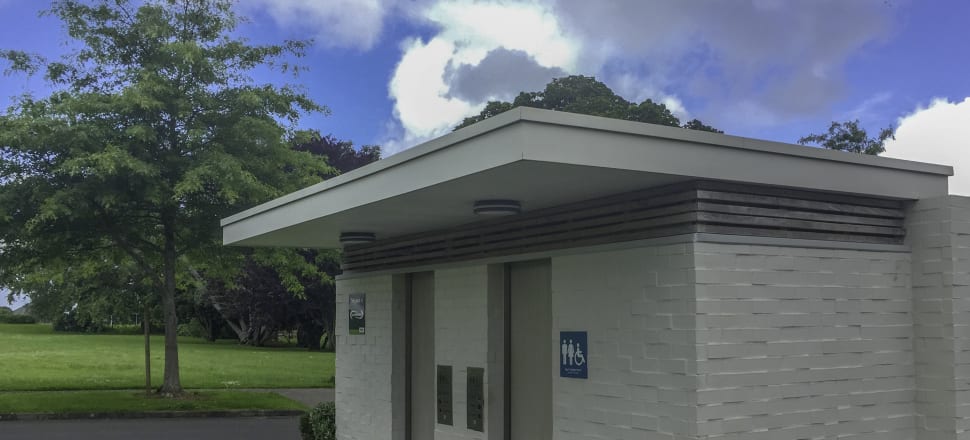
Despite government messaging that the latest round of tourism infrastructure funding will foster recovery from this year’s severe weather events, almost half of the money will go to toilets
Minister of Tourism Peeni Henare is touting the distribution of a $14.3 million fund for tourism projects across the country as a big win for recovery from the extreme weather of 2023.
But while the 56 projects now set to be co-funded by the Government span the country, it seems there’s a particular kind of tourism infrastructure getting the lion’s share – and it’s not the walking trails, roads or natural sites battered by Cyclone Gabrielle.
READ MORE:
* Tourism's faltering recovery relies on foreign workers to sell NZ
* Public-private partnership could be the key to survival of tourism
Nearly half of the fund – just over $6 million – will go towards the upgrade, repair and construction of public toilets across the country.
And while Hawkes Bay saw the worst of the cyclone damage, only 10 percent of the money this round is going to district councils in the region.
They’re numbers that don’t exactly match up with the Minister of Tourism’s funding announcement, where he said storm recovery was a prime concern.
"Supporting projects which provide resilience and aid recovery for regions hit by the extreme weather events earlier this year was a priority for the final round of funding through the Tourism Infrastructure Fund,” Henare said.
“We recognise the impact extreme weather events had on local infrastructure and visitor numbers which is why we intentionally prioritised funding to help support communities restore and upgrade tourism infrastructure to pre-cyclone conditions to help local communities recover.”
The council receiving the highest level of funding is Thames-Coromandel, which does govern an area hit hard during the storms.
However, 82 percent of that funding is going into new toilets at Kopu, Waikawau and Coromandel Bike Park and upgrading existing toilets on Coromandel Peninsula at Matarangi, Whitianga, Tairua and Whangamata.
Just under a third of the fund will go to the repair of walking and cycling trails, with over a million for safe pedestrian and cycleways between Nelson and its marina.
Greens tourism spokesperson Ricardo Menéndez March said the Government could be doing more to ring-fence funding for sustainable recovery in cyclone-stricken areas, and noted most of the money went towards areas not heavily hit by the storms.
“The figures don’t match what’s indicated in the press release,” he said. “The reality is we do need to do more to support the areas that have been impacted by the weather events.”
He said arguments over a freedom camping bill in Parliament earlier this year brought to the fore the importance of infrastructure like public toilets, for which local councils often find themselves footing the bill.
However, that shouldn’t overshadow “crucial funding” for returning the sustainability of infrastructure in storm-ravaged corners of the country.
“All these projects are competing over a limited pool of money,” he said. “We need to do more if we can.”
A Ministry of Business, Innovation and Employment (MBIE) spokesperson said it was important context that the fund was open to all councils to apply for funding as they thought it matched their needs.
MBIE manager of investment management performance David Talbot said round seven of the fund was open to all councils to seek funding to address infrastructure needs from tourism visitor pressure.
"Round seven put particular priority on applications from councils where visitor-related infrastructure has been affected by the recent extreme weather events in the last year, and priority on upgrades to improve resilience in regions particularly where there is a low ratepayer base and high visitor numbers," he said.
However, of 109 proposals received, only 20 were for extreme weather events. Eighteen of these received funding, while two didn't meet the criteria or couldn't be funded this time around.
He said $6.2 million of the funding did go towards weather- and resilience-related projects.
These include repairs to track damage at Craters of the Moon Bike Park in Taupo, repairs to the Tuki Tuki Walking and Cycling Trail in Hawkes Bay and repairs to trail, viewing platforms and fencing at Tarawera River Trail.
That $6.2 million of weather- and resilience-related projects didn't exclude work on toilets, however. The $2.2m for the installation of three new toilets and update of four existing toilets on the Coromandel Peninsula makes up just over a third of that.
Funding recipients are still expected to pay for as much of the projects as they can, and must pay for at least half of it.
In the latest figures from MBIE, tourism generated a direct contribution to GDP of $10 billion, or 3 percent. Meanwhile, the indirect value added of industries supporting tourism generated an additional $6.6 billion, or 2 percent.
Those numbers come from the year ending March 2022, when border restrictions were still hampering tourism’s return.
It’s expected a report coming in December will show a return to more pre-pandemic numbers, when the industry provided employment for 8.4 percent of the workforce.
The tourism infrastructure fund was established to encourage tourism growth while making sure smaller communities facing outsized growth in visitor numbers can handle pressures on infrastructure and amenities – areas with high visitor numbers but small ratepayer bases.
An independent panel assesses applicants and decides where the money can be most effectively used.
MBIE guidance for applicants also stresses this round of funding is intended to focus on storm recovery:
“Priority will be given to the repair of visitor-related infrastructure damaged by extreme weather events in the last year, and to support upgrades to improve resilience in regions where there is a low ratepayer base and high visitor numbers.”







